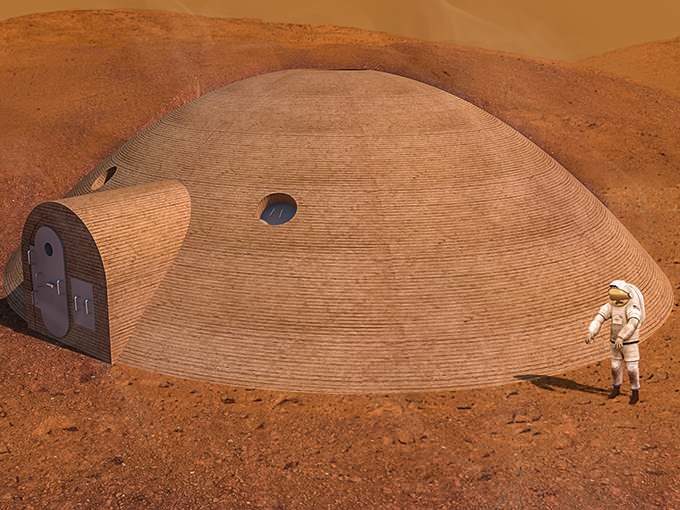
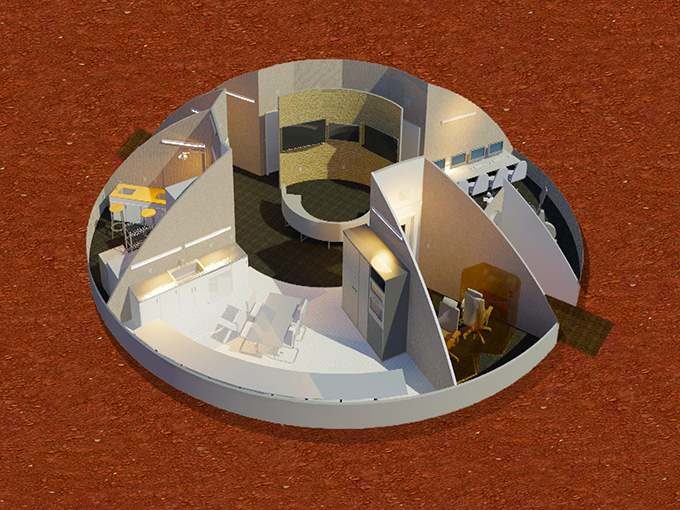
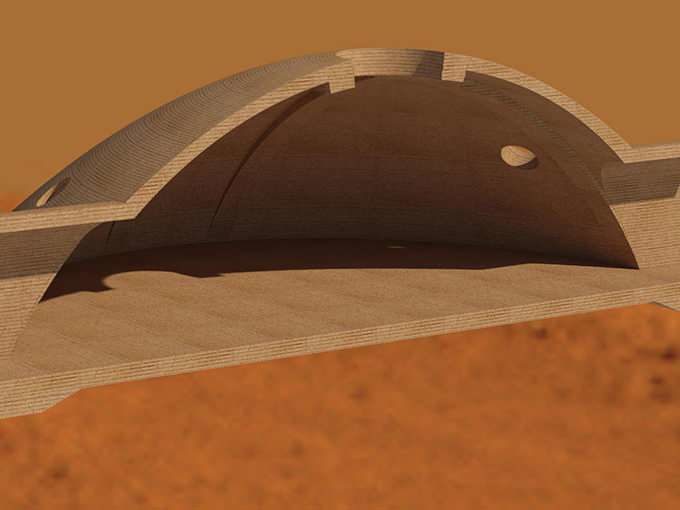
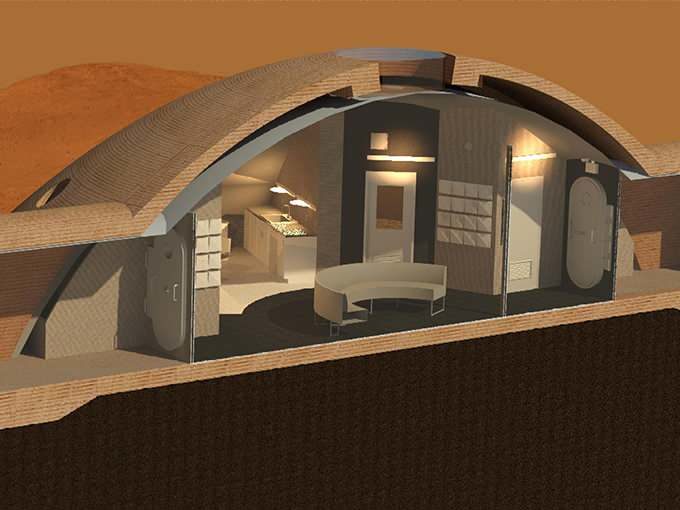
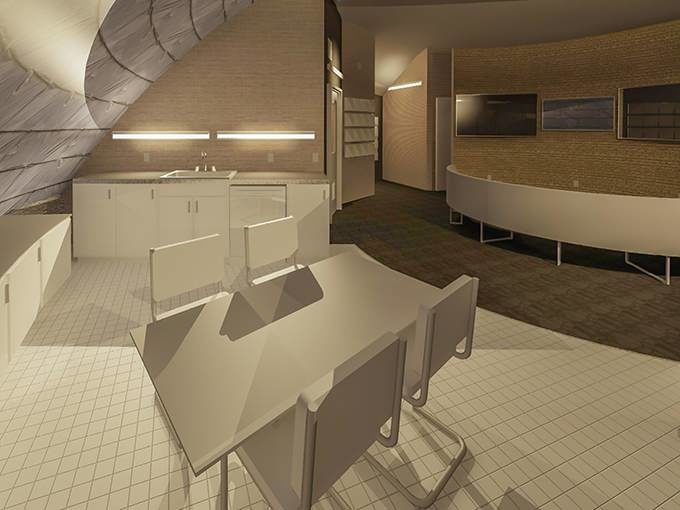
NASA has named Northwestern University and SOM as one of the five leading teams in the latest phase of the 3D-Printed Habitat Centennial Challenge competition. Launched in 2014, the competition invited 18 research teams from around the world to design autonomously constructed habitats that have the potential to support human life on Mars and the Moon.
Along with Northwestern, the five leading teams are Team Zopherus (Arkansas), AI. SpaceFactory (New York), Kahn-Yates (Mississippi), and SEArch+/Apis Cor (New York). The five leading teams will share a prize of $100,000. All 18 teams will advance to the next phase of the competition.
The Northwestern University/SOM concept—led by Northwestern, with SOM providing support on engineering and design—includes a 3D-printed concrete dome designed to be manufactured and printed on Mars. The printed material acts as a shell when completed, protecting inhabitants from solar radiation, wind-borne debris, and meteorite impacts. The material is placed over an inflatable formwork system that doubles as a pressure vessel simulating Earth’s atmosphere. The structure also incorporates modular connection points with entry airlocks suited for colony expansion. View a video of the concept here.
“Having a team of students and experts with diverse skill sets has been invaluable in this competition, allowing us to merge architecture, structural engineering, additive manufacturing, engineering mechanics, material science, and chemistry,” said Gianluca Cusatis, Ph.D, Associate Professor of Civil and Environmental Engineering for Northwestern’s Center for Sustainable Engineering of Geological and Infrastructure Materials (SEGIM). Cusatis has led the Northwestern University team since it joined the competition in 2018. “We are fortunate to have had the opportunity to team with SOM, as well as the faculty from the McCormick School of Engineering and Applied Sciences, who have made breakthrough contributions in their respective disciplines.”
“As with any multi-organization venture, coordination has been critical to our success,” added Matthew Troemner, a Ph.D student with SEGIM and a member of the competition team. ” Along with SOM’s support, we could not have asked for a more enthusiastic team of students. Despite homework, extracurriculars, and exams (we did take one week off for finals), the team always came prepared with enthusiasm and new ideas.”
Northwestern University will continue to lead the next phase of the competition, which will focus on 3D prints of the foundation and wall elements for the dome structure. Deadlines and milestones will be announced by NASA in the coming months. Learn more about the competition.